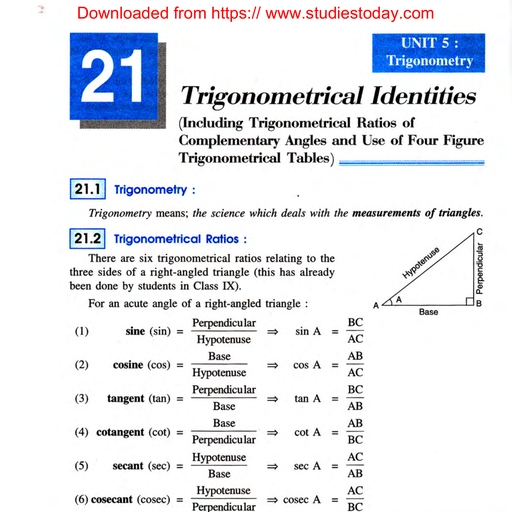Question 1 :
Find the sum of the odd numbers between 0 and 50.
Question 2 :
How many terms of the AP : 9, 17, 25, . . . must be taken to give a sum of 636?
Question 3 :
Find the sum of the following AP: $\frac{1}{15}, \frac{1}{12}, \frac{1}{10}, . .$ , to 11 terms
Question 4 :
An AP consists of 50 terms of which 3rd term is 12 and the last term is 106. Find the 29th term.
Question 5 :
Which term of the AP : 121, 117, 113, . . ., is its first negative term?
Question 6 :
11th term of the AP: – 3, -0.5, 2, . . ., is
Question 7 :
Does $a_1, a_2, . . ., a_n, . . $ form an AP where $a_n = 3 + 4n$?
Question 8 :
The sum of the 4th and 8th terms of an AP is 24 and the sum of the 6th and 10th terms is 44. Find the first three terms of the AP.
Question 9 :
In the following AP, find the missing term: 2, __ ,26
Question 10 :
If the sum of the first n terms of an AP is $4n – n^2$, What is the 3rd term ?
Question 11 :
Find the sum of the first 15 terms in $a_n = 9 – 5n$
Question 12 :
If the sum of the first n terms of an AP is $4n – n^2$, What is the nth term ?
Question 13 :
In an AP, given $d = 5, S_9 = 75$, find a and $a_9$.
Question 14 :
<img style='object-fit:contain' src='https://teachmint.storage.googleapis.com/question_assets/cbse_ncert/61b19bc8273b230584979a15.JPG' />
In the above fig. In a potato race, a bucket is placed at the starting point, which is 5 m from the first potato, and the other potatoes are placed 3 m apart in a straight line. There are ten potatoes in the line. A competitor starts from the bucket, picks up the nearest potato, runs back with it, drops it in the bucket, runs back to pick up the next potato, runs to the bucket to drop it in, and she continues in the same way until all the potatoes are in the bucket. What is the total distance the competitor has to run?
Question 15 :
The 17th term of an AP exceeds its 10th term by 7. Find the common difference.
Question 16 :
Check whether – 150 is a term of the AP : 11, 8, 5, 2 . . .
Question 17 :
A contract on construction job specifies a penalty for delay of completion beyond a certain date as follows: Rs 200 for the first day, Rs 250 for the second day, Rs 300 for the third day, etc., the penalty for each succeeding day being Rs 50 more than for the preceding day. How much money the contractor has to pay as penalty, if he has delayed the work by 30 days?
Question 18 :
<img style='object-fit:contain' src='https://teachmint.storage.googleapis.com/question_assets/cbse_ncert/61b19bc7273b230584979a14.JPG' />
In the above fig. 200 logs are stacked in the following manner: 20 logs in the bottom row, 19 in the next row, 18 in the row next to it and so on. In how many rows are the 200 logs placed and how many logs are in the top row?
Question 19 :
The first term of an AP is 5, the last term is 45 and the sum is 400. Find the number of terms and the common difference.
Question 20 :
For what value of n, are the nth terms of two APs: 63, 65, 67, . . . and 3, 10, 17, . . . equal?
Question 21 :
Determine the AP whose third term is 16 and the 7th term exceeds the 5th term by 12.
Question 22 :
<img style='object-fit:contain' src='https://teachmint.storage.googleapis.com/question_assets/cbse_ncert/61b19bc3273b230584979a0e.JPG' />
In the above fig, find the missing value corresponding to (iii)
Question 23 :
Find the sum of the following AP: 2, 7, 12, . . ., to 10 terms.
Question 24 :
In an AP, given $a = 8, a_n = 62, S_n = 210$, find n and $d$.
Question 25 :
In an AP, given l = 28, S = 144, and there are total 9 terms. Find a.





























